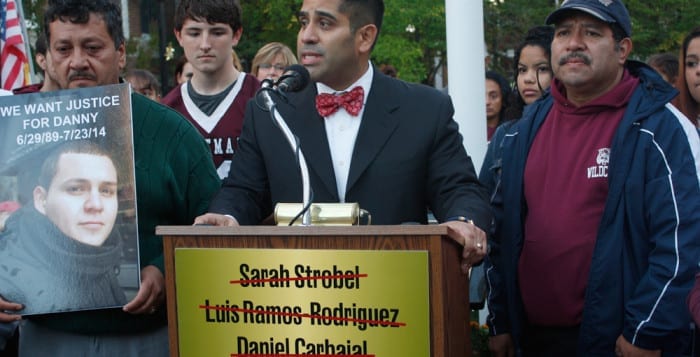Peaceful protests are an American tradition

By Rich Acritelli
Our nation has lately been rocked by protests that are springing up around the country in response to perceived unequal treatment, mostly at the hands of law enforcement. But these sorts of movements are nothing new — Americans of all colors and creeds have a history of protesting the government and bringing about positive change.
Since the first European explorers and settlers made their way to this continent, Native Americans have experienced some of the greatest hardships. While there are some positive stories in American history, like that of Sioux runner Billy Mills winning the gold medal in the 1964 Tokyo Olympics for the 10,000-meter race, such stories were rare. The reservation system was built on poverty and has historically had high rates of suicide, depression, alcoholism and drug abuse. During the 1970s, major tribal groups banded together to protest for enhanced rights from the government. From briefly occupying Alcatraz Island in San Francisco to taking over the Bureau of Indian Affairs building in Washington, D.C., it was their goal to work with the government to better the lives of Native Americans.
After Japan’s Dec. 7, 1941, attack on Pearl Harbor, the fearful U.S. government removed Japanese-Americans from their daily lives on the West Coast. Loyal people who paid taxes, were productive citizens and had their children learn about the Constitution were viewed as enemy combatants. More than 110,000 citizens were forced into internment camps from California to Arkansas. From 1942 to 1946, the Japanese were imprisoned and had all of their rights stripped from them. Ironically, some of the most valiant U.S. soldiers who had served in the bloody fighting in Italy’s mountainous terrain during World War II were Japanese-Americans. With their loved ones imprisoned at home, the soldiers were highly decorated and even wounded fighting against the Nazis.
But unlike other historic groups that fought back against injustice, the Japanese Americans did not mount any movement of criticism against their internment, and there was no public or political sympathy for them. It was some 40 years later when Congress finally listened to several weeks of testimony that described the horrors of internment. In 1988, the government formally apologized for the wrongdoing and compensated affected citizens with reparations.
Once World War II ended, black soldiers who defended their country arrived home to a government that was still unwilling to fully grant equal rights to them. Some African Americans who fought with distinction in the European and Pacific theaters were lynched in their uniforms when they returned home, a report that sickened President Harry S. Truman. In 1948, he desegregated the armed forces. But racism was not over — since the end of the Civil War, black citizens had to contend with unfair treatment, such as poll taxes to keep them from voting and the resentment and violence of the Ku Klux Klan. Black Americans responded fully during the Civil Rights Movement in the 1950s and 1960s, including with the civil disobedience under Martin Luther King Jr.
As a young man, Cesar Chavez realized that massive inequalities plagued the Latino pickers in the California fields. After spending two years in the military, Chavez began his life’s mission to help the migrant workers, who had little voice in their society. His earliest efforts of aiding others were to ensure that Hispanic people had support dealing with police discrimination, violence, tax problems and immigration issues. Chavez’s social work was also geared toward gaining respect from the California government to help the thousands of workers who strenuously labored in the fields. He extensively traveled in that state to gauge the needs of the workers. During the 1960s, his labor movement reached the impoverished vegetable and fruit pickers. Through nonviolent protests, Chavez and his followers asked Americans not to buy the products that they were harvesting in order to put pressure on the large businesses and farms to be fairer with their wages and labor practices. At various points during the movement, Chavez fasted several times to bring attention to the economic, social and political needs of the workers and citizens he represented. By the 1970s, the pickers’ movement achieved success, with many of the farmhands gaining union contracts. The United Farm Workers Union earned the right to collectively bargain.
It is an American right to protest unfair treatment at the hands of the local, state and federal government. While many inequalities still exist in our society, past movements have demonstrated that peaceful protests for change do work. Change has and always will come to this nation, but it cannot be positive if won through violence against people or property.
Rich Acritelli is a social studies teacher at Rocky Point High School and an adjunct professor of American history at Suffolk County Community College. He was a staff sergeant in the New York Air National Guard 106th Rescue Wing in Westhampton Beach.






